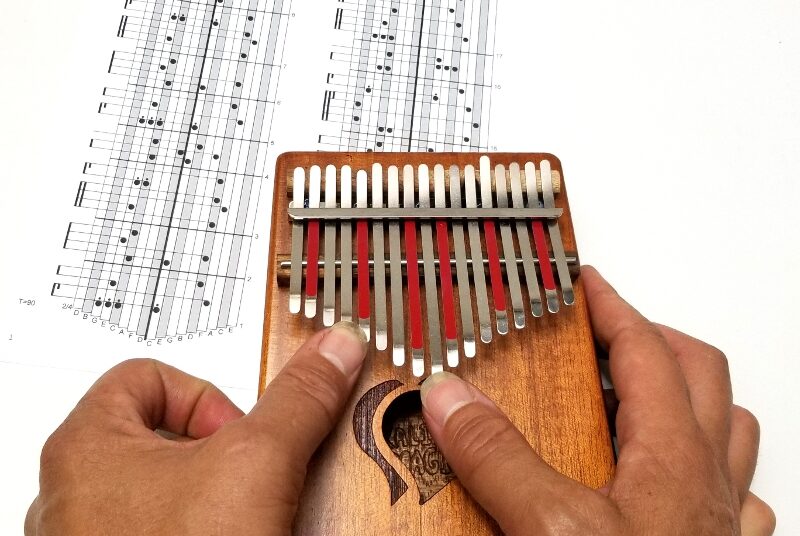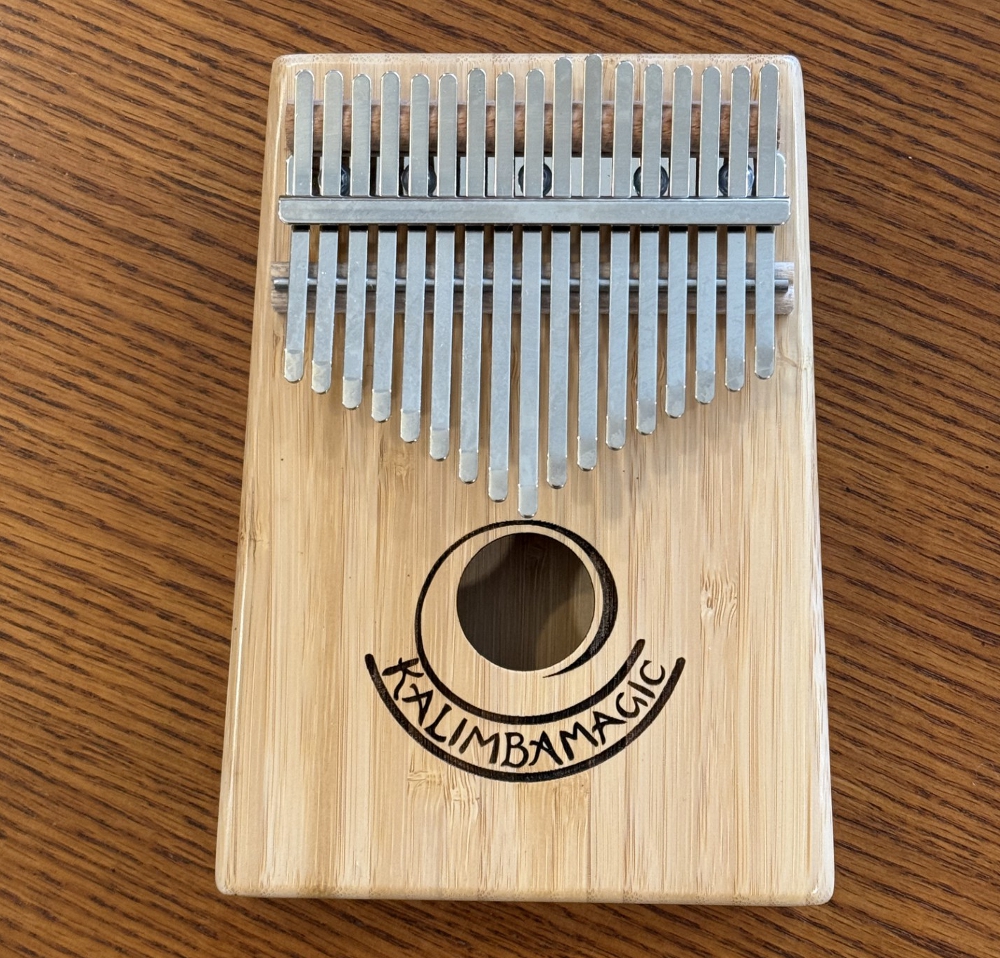
Use of this website constitutes acceptance of the Privacy Policy and User Agreement. Copyright © 2020 Kalimba Magic. All Rights Reserved.
The F7 Bebey and the G minor Pentatonic scales are made up of intervals of two or three half steps (two half steps is a whole step, and three half steps is also known as a minor 3rd). The Ake Bono tuning is very strange in that it has two intervals that are only a half step, and also one interval between adjacent notes in the scale that is two whole steps. The intervals in this scale are both closer and farther apart than the intervals on the other scales.
The Ake Bono scale starts as 1 2 3-, or one, two, minor third. It falls short of the major – it is minor, mysterious and moody. But often totally beautiful.
The closeness of the 2 and the 3- as well as the 5 and the 6- gives tension to this tuning. But look at this tuning: low A to low Bb is left to right… then move outward one tine on both sides, and we play low D to low Eb – that is, we can excite that half step tension in parallel ways, first on one interval (A and Bb) and then on the other one (D and Eb). In fact, we can continue on up this ladder to high A and high Bb, then in higher parallel, high D and high Eb.
Ah, the beauty of unexpected finds of symmetry! But if you have been around the kalimba for a while, you expect symmetry by now. This is a fundamental rule: great kalimba tunings reflect symmetry in interesting ways.
“Peaceful Mystery” on the G Ake Bono tuned pentatonic kalimba.


Sign up for our newsletter and free resources with your email address:
We pinky promise not to spam you and to only send good stuff.
 Seek to Infuse Your Musical Moments With Beauty and Magic
Seek to Infuse Your Musical Moments With Beauty and Magic Kalimba Magic – We Give You The Tools You Need to Succeed
Kalimba Magic – We Give You The Tools You Need to Succeed Back in Stock! The Bamboo-17 Kalimba
Back in Stock! The Bamboo-17 KalimbaUse of this website constitutes acceptance of the Privacy Policy and User Agreement. Copyright © 2020 Kalimba Magic. All Rights Reserved.